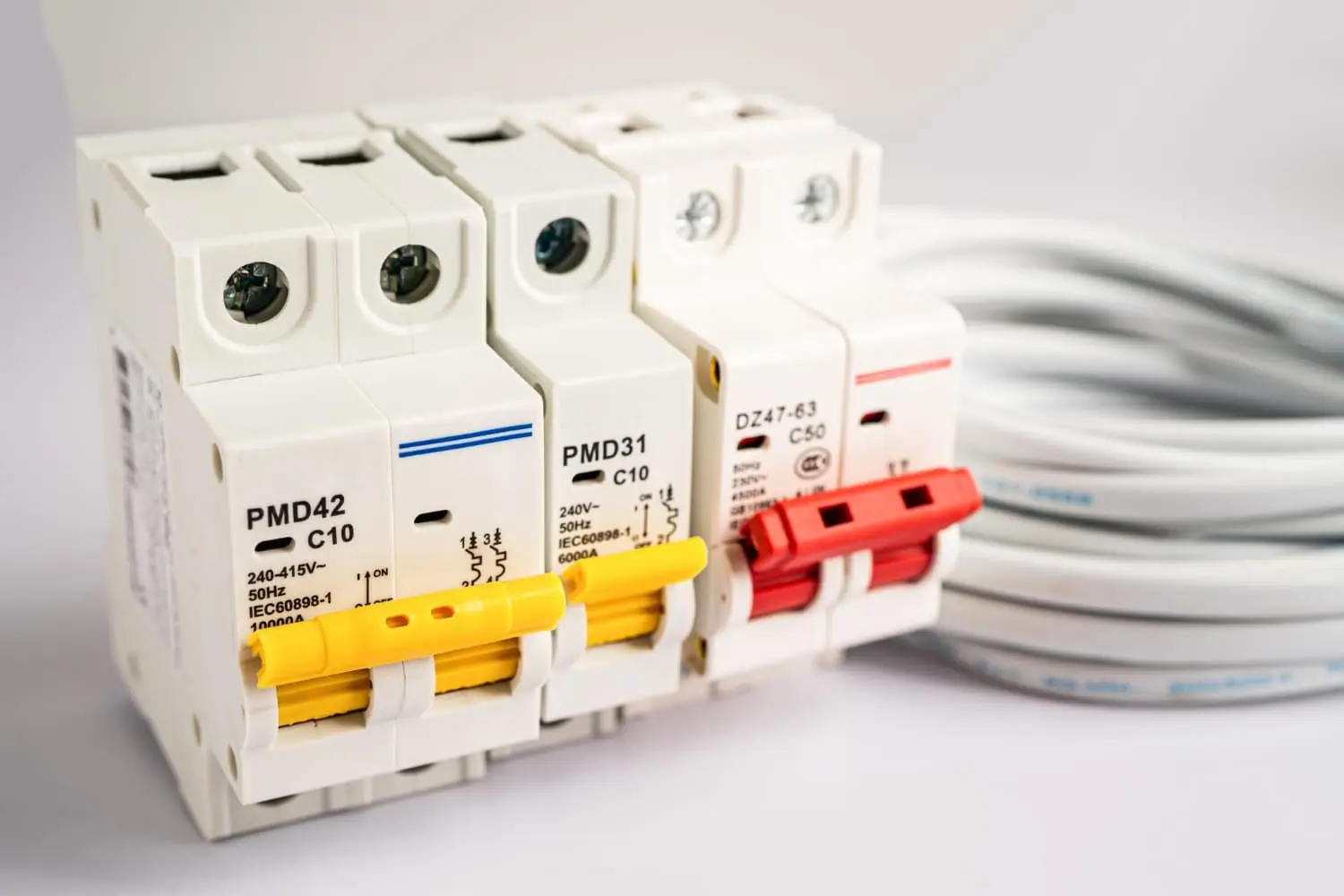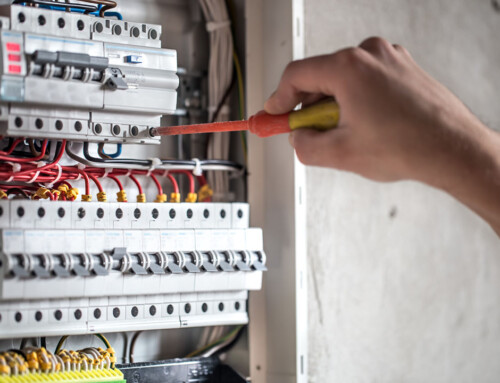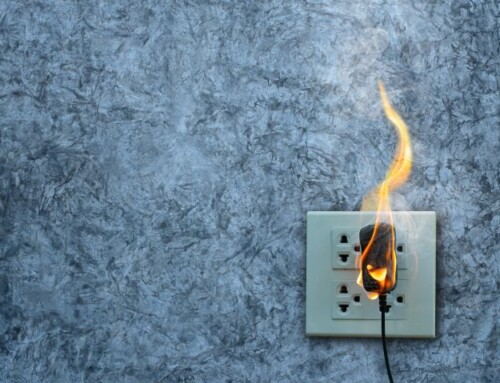Table of Contents
Ever come across a situation where your lights go out unexpectedly, even though the switch is flipped on? There might be a small but important part of your electrical system called a fuse that’s responsible! Fuses act like hidden protectors in your home’s wiring, working quietly to keep things safe. In this blog post, we’ll take a closer look at electrical fuses, how they function, the different kinds available, and where they’re used.
What is an Electric Fuse?
Electrical circuits need protection from situations where too much current flows. This can happen due to a surge in power or a faulty connection. Fuses act as an important safety device in these scenarios.
Imagine a fuse as a weak link within the circuit. Its core component is a thin metal strip or wire. This element is designed to carry a specific amount of current without overheating. However, if the current flowing through the circuit surges due to a short circuit or overload, the metal strip heats up rapidly. Due to this heating effect, the metal element melts, creating a gap in the circuit. This gap effectively interrupts the current flow, stopping the excess current from damaging other components.
The selection of the metal used in the fuse element is crucial. Common materials include aluminum, silver, zinc, and copper. Each metal has a varying melting point, allowing for precise selection based on the desired current rating of the fuse. For instance, a fuse designed for a lower current load might use a metal with a lower melting point compared to a fuse meant for a higher current circuit.
Types of Fuses
Fuses can be categorized into two main groups based on the type of electrical current they’re designed for:
- AC fuses: These are suited for use in circuits with alternating current (AC) power.
- DC fuses: These are made for circuits that use direct current (DC) power.
We’ll explore these two types in more detail below.
Fuses
AC fuses are essential components within alternating current (AC) electrical systems. Their primary function is to safeguard the circuit from damage caused by excessive current flow, also known as overcurrent conditions.
One key difference between AC fuses and DC fuses is their ability to handle the specific characteristics of the current they interrupt. AC current constantly changes direction, and AC fuses are designed to handle this periodic shift.
These fuses are made with a special element that melts or vaporizes when exposed to an excessive amount of current flowing through the circuit.
There are two main types of AC fuses:
- Low Voltage Fuses
- High Voltage Fuses
1. Low Voltage Fuses
Low Voltage Fuses are primarily divided into 5 main types:
-
Rewirable Fuses
These fuses are commonly used in residential wiring and circuits with relatively low current loads. They consist of two main parts:
- Fuse Base: Typically made of porcelain, this base provides insulation and houses the terminals for connecting wires.
- Fuse Carrierx: This component holds the replaceable fuse element. The element itself can be crafted from various conductive materials such as lead, aluminum, tinned copper, or a tin-lead alloy. The selection of material influences the fuse’s current rating and blowing characteristics.
-
Cartridge Type Fuses
Unlike rewirable fuses, cartridge fuses feature a fully enclosed design. The fuse element, equipped with metal contacts on both ends, is housed within a sealed cartridge. This design offers enhanced safety and prevents accidental contact with live components. Cartridge fuses are further classified into two subcategories:
-
D-type Fuses
D-type cartridge fuses consist of several key components: the base, cartridge, adapter ring, and fuse cap. The base acts as the foundation, securely holding the fuse cap. This cap, in turn, houses the cartridge, the heart of the fuse. When the cartridge is fully inserted into the base, its tip makes contact with the conductor, creating a complete circuit path. A key feature of D-type fuses is their time-delay characteristic. This allows them to tolerate temporary current surges, making them ideal for applications that experience inrush currents during startup, such as motors.
-
Link-type Fuses
Link-type cartridge fuses prioritize rapid response to overcurrents. These fuses are designed to protect sensitive electronic equipment by quickly interrupting the circuit in the event of a current overload. The construction of link-type fuses focuses on ensuring a controlled arc when a fuse blows. This arc is typically formed using materials like porcelain, ceramic, and silver. Additionally, silica sand is packed around the fuse element within its container for further control. Link-type fuses come in two main varieties: bolted and bladed. The specific type chosen depends on the application and connection requirements.
-
-
Dropout Fuse
Dropout fuses rely on gravity to interrupt a circuit experiencing an overload. The fuse element, typically a thin strip of metal, melts due to excessive current flow. As it melts, the element loses its structural integrity and falls away from its bottom support due to gravity. This physical separation breaks the circuit, stopping the flow of electricity. Dropout fuses are often found protecting outdoor transformers, where their simple design and reliance on gravity make them a reliable choice.
-
Striker Fuse
Unlike dropout fuses which rely on a physical change, striker fuses use a mechanical tripping mechanism. These fuses contain a spring-loaded metal element that melts under overload conditions. The melting weakens the element, releasing the stored energy in the spring. This spring then forcefully pushes a lever, which in turn opens the circuit by disconnecting contacts within the fuse. Striker fuses are known for their ability to generate a significant amount of force and displacement when activated, making them ideal for triggering indicator lights or tripping circuits that require a more powerful response.
-
Switch Fuse
A switch fuse combines the functionality of a traditional fuse with a physical switch. Essentially, a switch mechanism is housed within the same enclosure as the fuse element. In normal operation, the switch allows current to flow through the fuse. However, when an overload occurs and the fuse element melts, the circuit is not only interrupted, but the switch mechanism also opens automatically, providing a visible indication that the fuse has blown. Switch fuses are primarily used in low and moderate-voltage applications where a clear visual confirmation of a blown fuse is desirable.
2. High Voltage Fuses
These fuses have a unique design and come in three main categories:
-
Cartridge Type HV HRC Fuse
This type features a special helix-shaped component that helps prevent the effects of corona at higher voltages. It also has two parallel fuse parts: one with low resistance and another with high resistance. During a fault, the low-resistance section carries the normal current and then blows out, interrupting the short-circuit current. It’s specifically designed for high-voltage applications and offers high rupturing capacity (HRC), meaning it can safely handle high fault currents without causing damage.
-
Liquid Type HV HRC Fuse
This fuse uses carbon tetrachloride as its main component. The liquid is sealed inside the fuse with caps on both ends. When a fault occurs, exceeding the current limit the fuse can handle, the fuse breaks. In HRC fuses, the liquid helps extinguish the arc that forms during this process. These fuses can be used for protecting transformers and providing backup protection for circuit breakers.
-
Expulsion Type HV Fuse
Designed for high-voltage applications, this fuse type relies on a process called “expulsion” to clear faults. During a fault, the fuse element melts, and the resulting arc is extinguished by rapidly expelling the arc gases. These fuses are commonly used in medium to high-voltage systems to protect equipment and circuits from overcurrents. Due to their lower cost, expulsion-type fuses are a popular choice for protecting transformers and feeders. They are constructed with a hollow tube made of paper bonded with synthetic resin, with open ends to allow for the expulsion of gases.
DC Fuses
A DC fuse is a vital component used in direct current (DC) electrical systems. Its primary function is to safeguard the system from situations with excessive current flow, also known as overcurrent.
DC fuses are specifically built to handle the unique properties of DC current. The materials used in their construction are chosen for their ability to interrupt DC currents effectively. The typical design includes a fusible element. This element is made from a material that melts or vaporizes when exposed to excessive current flow.
We can find DC fuses in various applications with DC electrical systems. This includes cars, boats, solar power systems, battery charging setups, and industrial settings. They offer essential protection for both the equipment and wiring within these systems.
However, DC fuses do face some challenges. Compared to AC fuses, DC fuses are often larger and have a constant value above zero volts. This makes it slightly more difficult to deactivate and isolate the circuit. Additionally, there’s a chance of an electric arc forming between the melting wires. To address this issue, DC fuses often have electrodes placed further apart to help eliminate this risk.
What is the Function of a Fuse?
Fuses play an important role in protecting electrical equipment from damage caused by excessive current flow. Here are some of the places you’ll find fuses used:
- Industrial settings: Fuses safeguard transformers, motors, and power systems from overcurrent conditions.
- Power distribution: Fuses are used in feeders, power transformers, and even solar circuits.
- Electrical devices: Both household appliances and distribution boards rely on fuses for protection.
- Transportation: Fuses are essential components in automotive vehicles (including electric vehicles), racing cars, and even railway systems.
- Electronics: You’ll find fuses in various electronic devices, including laptops, hard drives, printers, scanners, gaming systems, and smartphones.
How to Choose the Right Fuse?
Picking the right fuse size is important for electrical safety. Think of a fuse as a safety switch. Its amperage rating shows the maximum current it can handle before interrupting the circuit. A fuse that’s too small will cut power too early, while one that’s too big allows too much current to flow, which could lead to a fire.
To choose the right fuse, figure out the highest amount of current your circuit will normally use (often the maximum amps your device uses). Then, pick a fuse with a rating at least 25% higher than that number. This extra room gives some breathing room for short bursts of higher current without sacrificing safety. For example, if your device uses 250 amps, a 325 amp fuse might be a good choice (depending on what sizes are available). Always remember, if you’re not sure about which fuse to choose, it’s best to consult with a qualified electrician. They can help you make sure your circuit is properly protected.
Closing Thoughts
Now that you’ve learned about the role fuses play in keeping your electrical system safe, it’s important to choose high-quality replacements when the time comes. We at D&F Liquidators offer you a wide selection of electrical parts, ensuring you find the right fit for your needs. Remember, using reliable components is key to maintaining a safe and secure electrical environment in your home.
Frequently Asked Questions (FAQs)
What is the job of a fuse in an electrical system?
A fuse acts like a safety device in your electrical circuit. If too much current flows through the circuit (overload), the fuse melts and stops the current flow. This protects your appliances and wires from damage and prevents fires.
Why do fuses blow out?
Fuses blow out as a safety measure to prevent damage to your electrical system. This can happen due to two main reasons:
- Overload: If too many appliances are plugged into one circuit, or a single appliance draws more current than the circuit is designed for, the fuse will melt to stop the flow of electricity.
- Short circuit: This is when electricity takes an unintended shortcut instead of flowing through the intended path in the circuit. This can cause a sudden surge in current, blowing the fuse.
What’s the difference between a fuse box and a circuit breaker?
Both fuse boxes and circuit breakers protect circuits from overload, but there are key differences in how they work:
- Fuse Box: This uses replaceable fuses that melt permanently when overloaded. To restore power, you need to replace the blown fuse. Fuse boxes are less common in modern homes.
- Circuit Breaker: This is a reusable switch that trips (switches off) during an overload. To get power back on, you simply reset the breaker. Circuit breakers are more convenient and widely used today.






